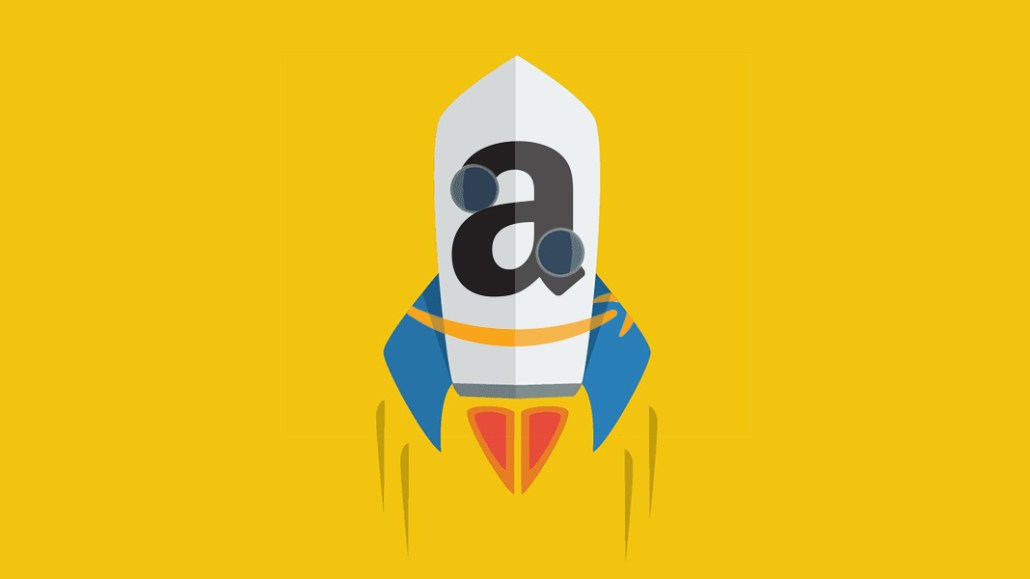
Amazon has long honed the business of being the middleman — getting brands to sell on its site, letting shoppers pay for and receive those items fast and efficiently.
But 2017 was the year Amazon started taking steps to create its own brands. If done at the right price point, Amazon will be in a strong position next year to prove it not only can help other retailers grow, it can be a retailer itself.
Amazon already has its AmazonBasics line of essentials like batteries and chargers. These items are largely commoditized, said Forrester analyst Sucharita Mulpuru-Kodali. It’s easy for Amazon to keep growing there: By bumping those products up in search results and pricing them right — which will be easy to do since Amazon owns the data — this line is poised to keep growing.
But the more interesting prospect is for private-label items that aren’t Amazon-branded. There are at least 19 brands Amazon owns and doesn’t operate under the Amazon brand name — from lingerie brand Arabella to furniture brand Strathwood. In October, Amazon rolled out private-label sportswear brands, including Goodsport (which competes with Champion), Rebel Canyon and Peak Velocity. Amazon may boasts fantastic brand recognition, but Amazon-branded panties are still a hard sell.
An October report by firm One Click Retail examined how Amazon’s private labels have performed. Amazon owns around 45 brands, and about 15 percent of its private-label sales come from those. The biggest one is women’s clothing line Lark & Ro, which had about $10 million in sales in 2017 to date when the report came out. Amazon’s Amazon Essentials clothing made about $3 million this year.
In apparel, Amazon’s most successful category with private label, L2 research found that the absence of major fashion brands that have traditionally abstained from selling on Amazon creates more room for private label to swoop in, a trend that would continue next year.
“This is the uphill battle,” said Mulpuru-Kodali. “This is dependent on leveraging data and picking the right things to develop or manufacture.”
The key is where Amazon chooses to focus. “Amazon will never be Nike,” said one merchandise head who didn’t want to disclose her name. “But it has the ability to own the lower price point in apparel and shoes, and make a lot of money that way.”
Mulpuru-Kodali agreed: “Private-label brands win because of price. Look at a Target brand or a Walmart private-label brand. They’re great value for [the] money.”
More Amazon private-label brands are coming. Late in November, Amazon moved into the furniture business — one of the last categories that people said would not be open to it — unveiling two private-label brands called Rivet and Stone & Beam. Amazon is also reportedly approaching furniture brands to sell on its marketplace.
It seems like 2018 won’t be about Brand Amazon: It can be Brand X, owned by Amazon. Unlike when other retailers make moves into private label, Amazon has control of customer data, and because of its seemingly endless amounts of cash, it can withstand some profit loss in early months or even years.
There’s another wrinkle. For smaller brands, Amazon is no stranger to looking at top-performing products and making its own to sell at a lower price. There are even small sellers who report that Amazon works with their factories.
In a way, experts say, 2017 set up just the beginning of Amazon’s domination — changing from being less of a marketplace and into conducting more of a full assault to own every part of the retail experience.
“Amazon private label is tiny, maybe a few billion, but because it’s small, it has huge opportunity for growth,” said Mulpuru-Kodali. “They get it right and execute it, and it represents potentially high margins.” It also means that Amazon has recognized it can’t get every brand and seller in the world to sell on Amazon. “This would mean they have control of their own destiny,” she said.
More in Marketing

Agencies create specialist units to help marketers’ solve for AI search gatekeepers
Wpromote, Kepler and Jellyfish practices aim to illuminate impact of black box LLMs’ understanding of brands search and social efforts.

What AI startup Cluely gets — and ad tech forgets — about attention
Cluely launched a narrative before it launched a tool. And somehow, it’s working.

Ad Tech Briefing: Start-ups are now table stakes for the future of ad tech
Scaled ad tech companies need to maintain relationships with startups, when the sector is experiencing ongoing disruption due to AI.





